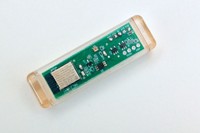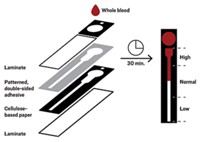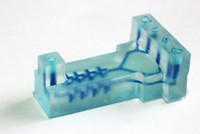Advertisement
Grab your lab coat. Let's get started
Welcome!
Welcome!
Create an account below to get 6 C&EN articles per month, receive newsletters and more - all free.
It seems this is your first time logging in online. Please enter the following information to continue.
As an ACS member you automatically get access to this site. All we need is few more details to create your reading experience.
Not you? Sign in with a different account.
Not you? Sign in with a different account.
ERROR 1
ERROR 1
ERROR 2
ERROR 2
ERROR 2
ERROR 2
ERROR 2
Password and Confirm password must match.
If you have an ACS member number, please enter it here so we can link this account to your membership. (optional)
ERROR 2
ACS values your privacy. By submitting your information, you are gaining access to C&EN and subscribing to our weekly newsletter. We use the information you provide to make your reading experience better, and we will never sell your data to third party members.
Analytical Chemistry
An ion-selective detector made of paper
Disposable device that can be used in the field consists of membranes and printed components
by Mitch Jacoby
June 6, 2016
| A version of this story appeared in
Volume 94, Issue 23

Each year, lab technicians use ion-selective electrodes (ISEs) to make more than 1 billion measurements of ion concentrations in biological and environmental samples, according to industry estimates. Those measurements, which are typically made with engineered lab instruments costing hundreds of dollars or more, might soon be made in the field with inexpensive, disposable paper-based systems.
University of Minnesota chemists Jinbo Hu, Andreas Stein, and Philippe Bühlmann have simplified ISE measurements by embedding a complete potentiometric cell into a single piece of filter paper. The low-cost system consists of printed polyurethane-based microfluidic channels to control the flow of aqueous solutions, an ion-selective membrane such as the kind used for ion exchange, a reference membrane, and stencil-printed Ag/AgCl electrodes. A simple voltmeter serves as a read out device (Angew. Chem. Int. Ed. 2016, DOI: 10.1002/anie.201603017).
The team notes that in contrast to other paper-based detectors, the new single-use device does not require careful assembly, pretreatment, or calibration. Measurements of chloride and potassium ion levels in blood serum samples show that the device yields highly reproducible results from sample volumes as small as 20 µL.





Join the conversation
Contact the reporter
Submit a Letter to the Editor for publication
Engage with us on Twitter